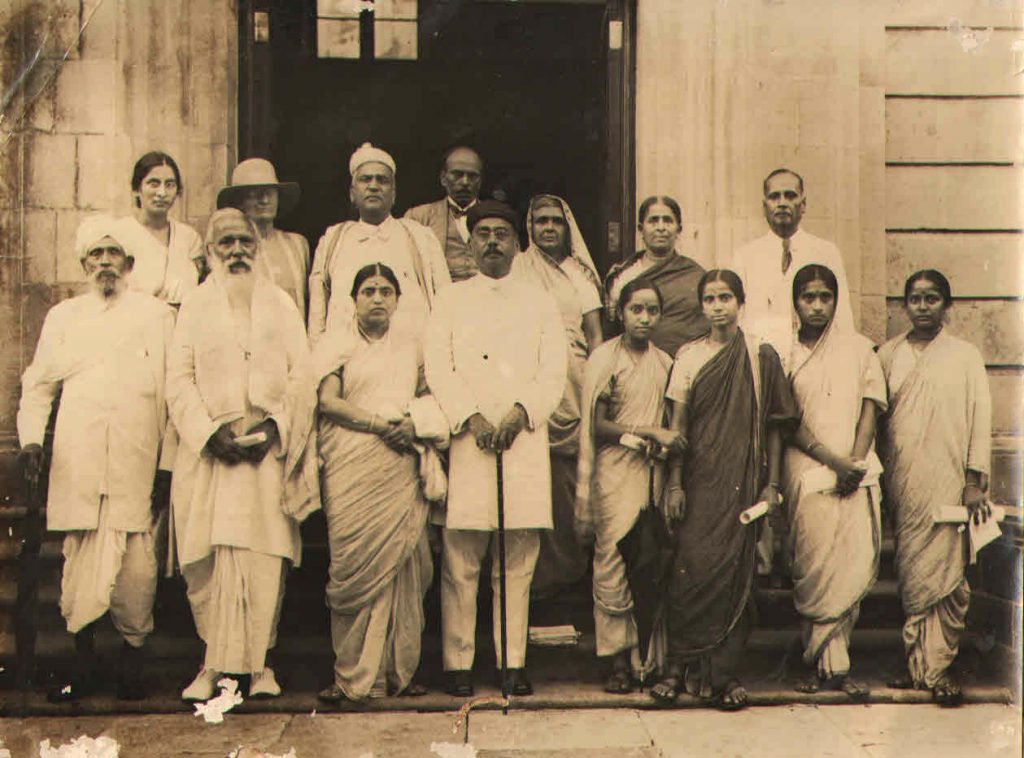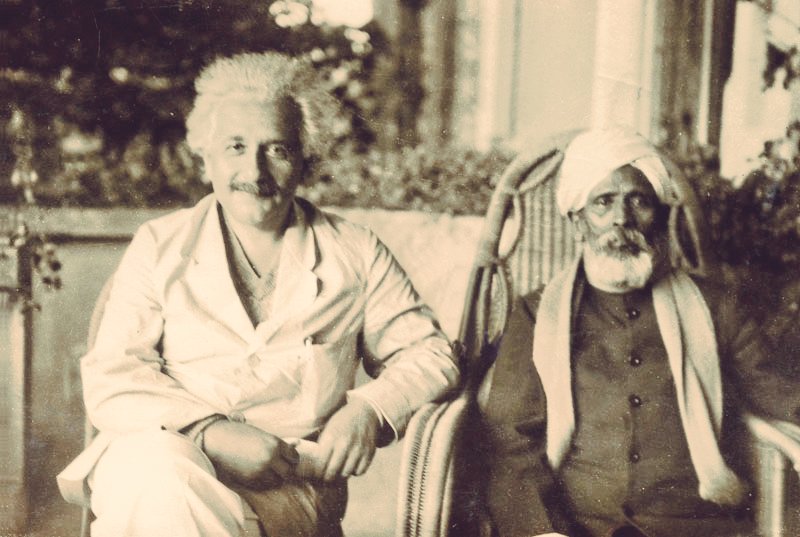Remembering the Selfless Man Who Set Up India’s First University for Women
A mathematics professor from Pune, Dhondho Keshav Karve was one of the earliest crusaders of women’s rights in India. Here’s his forgotten story.

In one of the bustling streets of Mumbai’s Khetwadi area, a heritage building has been serving as a thriving oasis for visual arts programmes that come under Shreemati Nathibai Damodar Thackersey (SNDT) University’s College of Arts. Restored and inaugurated as the SNDT University — Jindal Centre for the Arts in 2015, the art hub (also called SNDT Kayashala) completed two years in August 2017.
The SNDT University, India’s first university for women, itself celebrated its centenary in 2016. However, few Indians know about the pioneering leader who established this historic institution in an era where little attention was paid to women’s education.
Here’s the story of Dhondho Keshav Karve, dedicated social reformer, avid educationist and one of the earliest crusaders of women’s rights in India.

Born on April 18, 1858 in Murud (in Maharashtra’s Ratnagiri district), Karve spent the most of his early childhood in the village of his birth. His father, Keshab Bappunna Karve, earned a meagre salary as the manager of a small estate.
Having obtained good marks in his matriculation exams, Karve was able to join the prestigious Elphinston College in Bombay, from where he passed his B.A. examination in 1884. Since maths was his favourite subject, after graduation, he started his career as the Professor of Mathematics in Ferguson College in Poona (now Pune).
This was the time when India’s social system was witnessing a revolutionary change, with inspiring people like Raja Ram Mohan Roy, Iswar Chandra Vidyasagar, Vishnu Shashtri Chiplunkar, Pandita Ramabai and Jyotirao Phule initiating path-breaking reforms for the upliftment of women. An integral issue addressed by their strong voices was the need for women’s education.
Deeply influenced by the reform movements and the people leading them, Karve decided to work towards educating and uplifting the status of women in the country, especially widows.

Karve’s outlook as a social worker had also been shaped by his childhood experiences. His first wife Radhabai (they had been married when Karve was just 14) had passed away in 1891 due to childbirth complications.
In 1893, Karve established the Widow Re-marriage Association in 1893. The same year, he set an example by marrying Godubai, a widow who had lost her husband at the age of 8. He also began speaking out against regressive practices such as untouchability.
In those days, widows had to tonsure their heads, wear a simple white sari and live a life of austerity. Doing anything outside these strict boundaries made them and the people who supported them easy targets of abuse.
However, despite being ostracized by the society, Karve didn’t stop raising his voice against this unjust discrimination. In 1895, he established the Hindu Widows Home Association, a welfare institution that helped widows support themselves.
A year later, he set up India’s first school for widows at Hingane village (near Poona). Karve’s widowed sister-in-law, Parvatibai Athavale, was the first student to join this school. This was followed by a Mahila Vidyalaya, a residential school for girls that trained them for jobs. He even developed a parallel matriculation course for girls.

For many of the following years, Karve would walk several kilometers from Hingne to Pune to spare his meagre resources for the schools. In his spare time, he would visit different localities to spread awareness and collect donations from the few progressive supporters, even as he was repeatedly insulted by orthodox members of the society.
Such was the furore caused by Karve’s work that the news of it even reached the far shores of South Africa. Gandhi, who was in South Africa at that time, would go on to write about it admiringly in his weekly publication, Indian Opinion.
After he retired from Fergusson in 1914, Anna Saheb (as he was affectionately called by his friends) was free to devote all his time to achieving one of most cherished dreams. Inspired by the Women’s University of Tokyo, Karve wanted to establish India’s first university for women.

When a severe financial crunch threatened to leave this dream unfulfilled, a worried Karve approached Vithaldas Thackersey for support. A Bombay-based industrialist and philanthropist ,Thackersey agreed to donate Rs 15 lakh to the project and requested that the new university be named after his mother.
Finally, the Shreemati Nathibai Damodar Thackersey Women’s University made its humble beginnings in 1916 in Pune with just five students in its first year. Today, the university (popularly known by its acronym SNDT) has more than 70,000 students in 26 colleges, 3 secondary schools for girls and 38 university departments, including art, management, technology, home science and humanities!
Karve later widened his social reform efforts to include the establishment of a training college for primary school teachers and societies for village primary education. He travelled across America, Europe, Africa and South Asia, attending conferences on education and sharing experiences from his life as an educationist in India.

Karve also spent much time working towards the abolition of the caste system, touring a number of villages to spread awareness on all these issues. In 1944, he founded the Samatā Sangh (Association for the Promotion of Human Equality) to share and spread his belief that all humans are born equal.
In 1955, Karve was awarded Padma Vibhushan. In 1958, four years before he passed away, the President bestowed on him India’s highest civilian honour, Bharat Ratna, and released postage stamps bearing his visage to mark his centenary year of his birth.
In another tribute to the social reformer’s illustrious life, a road in South Mumbai had been earlier named Maharishi Karve Marg (he was given the moniker ‘Maharshi’ in honour of his selfless work). Incidentally, this road merges into a route named after Raja Ram Mohan Roy, another Indian reformer far ahead of his times.
Dhondho Keshav Karve would often say that it is better to light a lamp in the darkness than to just curse it. And that is just what this self-effacing leader did, spending his entire life lighting up the lives of many a girl and widow.
Also Read: Yusuf Meherally, The Forgotten Freedom Fighter For Whom Bombay Once Stood Still
Like this story? Or have something to share? Write to us: [email protected], or connect with us on Facebook and Twitter.
NEW: Click here to get positive news on WhatsApp!
If you found our stories insightful, informative, or even just enjoyable, we invite you to consider making a voluntary payment to support the work we do at The Better India. Your contribution helps us continue producing quality content that educates, inspires, and drives positive change.
Choose one of the payment options below for your contribution-
By paying for the stories you value, you directly contribute to sustaining our efforts focused on making a difference in the world. Together, let’s ensure that impactful stories continue to be told and shared, enriching lives and communities alike.
Thank you for your support. Here are some frequently asked questions you might find helpful to know why you are contributing?


This story made me
-
97
-
121
-
89
-
167











